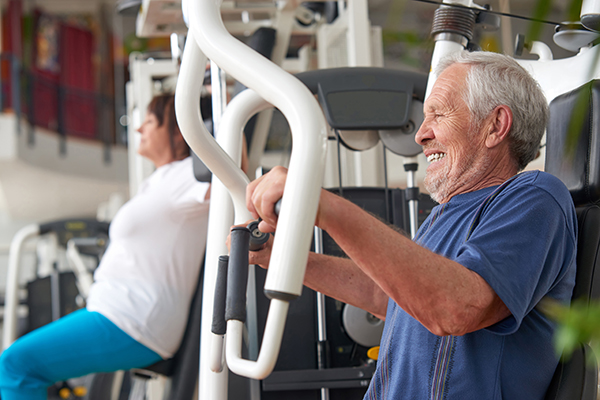Walking for 5 minutes every half hour can help you stay healthy if you sit all day, reveals study
01/18/2023 / By Zoey Sky

For many employees, a regular day at the office involves sitting at a desk for many hours. But a sedentary lifestyle can have many adverse effects on your overall health.
Fortunately, a study has found that going on a five-minute walk after every 30 minutes can help fight the negative side effects of a sedentary lifestyle.
Details of the study were published in the journal Medicine & Science in Sports & Exercise, the journal of the American College of Sports Medicine.
Determining the optimal walking routine
The study was conducted by scientists from Columbia University who reported that making this lifestyle change can help reduce both blood sugar levels and blood pressure.
Results also showed that taking walking breaks can reduce blood sugar spikes by almost 60 percent compared to those who sit all day. Going on walks was also found to leave participants feeling less tired and with significantly improved moods.
For the study, 11 volunteers were told to sit in an ergonomic chair for eight hours. The volunteers were also told when to take walking breaks.
The volunteers took part in five different routines:
- Walking for one minute after every 30 minutes of sitting.
- Walking for one minute after 60 minutes.
- Walking for five minutes after every 30 minutes.
- Walking for five minutes after every 60 minutes.
- Not walking at all after sitting.
Keith Diaz, study lead author and associate professor of behavioral medicine at Columbia University Vagelos College of Physicians and Surgeons, explained that if the research team didn’t compare multiple options and varied the frequency and duration of the exercise, they would “have only been able to provide people with our best guesses of the optimal routine.” (Related: Walking after a meal can help prevent diabetes, experts say.)
During the study, the scientists made sure that none of the volunteers exercised too much or too little. They were allowed to work on laptops, read books and use their phones.
All volunteers were also provided meals for the duration of the study.
Walking can help reduce blood pressure
After completing all the tests, the results showed that the optimal amount of movement was five minutes of walking for every 30 minutes of sitting.
The researchers reported that taking a walking break every 30 minutes for one minute also provided modest benefits for blood sugar levels throughout the day.
But walking every 60 minutes for either one minute or five minutes offered no health benefits. The scientists also discovered that walking significantly reduced blood pressure by four to five mm/Hg compared to sitting all day.
According to Diaz, this is a significant decrease “comparable to the reduction you would expect from exercising daily for six months.”
She added that the effects on mood and fatigue are important since people will often repeat “behaviors that make them feel good and that are enjoyable.”
According to the study findings, moving regularly at work and having a daily exercise routine are important for optimal health.
Walking for five minutes after every half hour may seem impractical, but the study findings suggest that even small amounts of walking spread throughout your day can help “significantly lower your risk of heart disease and other chronic illnesses.”
How to stay healthy if you sit at a computer all day
Working in an office might not be the most active job, but being sedentary most of the day will harm your overall health. Remember to take five-minute walks every half hour, so you don’t spend too much time sitting.
Sitting all day can also make you more prone to having a sedentary lifestyle. This may increase your risk for chronic health issues like heart disease, obesity and Type 2 diabetes.
If you have a desk job and want to improve your well-being, follow the tips below.
Improve your good sitting posture
Just because you have to sit at work doesn’t mean you can’t have good posture.
According to the Journal of Physical Therapy Science, poor posture can strain your muscles and joints. This is bad for your health because it may cause balance issues, fatigue and back and neck pain. Poor posture can also make movements, such as daily activities or exercises, very uncomfortable.
Tips to improve your sitting posture:
- Keep your body and spine in a neutral position.
- Keep your hands and forearms parallel to the floor while your elbows are at 90-degree angles.
- While sitting at your desk, keep your head, neck and torso upright.
- Place your feet flat on the floor to support your legs.
- If you are too short and your feet don’t reach the floor, get a footrest.
Use ergonomic furniture
If you have the budget for it, invest in ergonomic equipment like a standing desk or a chair with a proper seat cushion and lumbar support. This type of furniture can help you be more aware of your posture, which then helps prevent further pain and discomfort.
For cheaper options, try using try ergonomic desk accessories such as a cushioned keyboard and mouse pads to help support your wrists.
You can also use your DIY skills to make your work setup more ergonomic. Create a makeshift standing desk by placing your laptop in a box on the counter.
Add lumbar support to any chair by getting a clean towel or sweatshirt, rolling it and tucking it in the nook at the base of the chair. Doing this will help support your lower back and the rest of your body.
Stretch your legs
Desk stretches will help keep your muscles healthy and limber throughout the day, especially if you spend most of it sitting down.
If your chest muscles are tight due to constantly slumping over, try a seated stretch to loosen things up. First, put both your hands, outstretched, on your desk and wheel or scoot your chair backward.
Next, try to push your head through your arms to lengthen your spine and relax your upper body muscles.
Reach for healthy, nutritious snacks
Snacking can help you feel full longer between meals. Having a small snack can also stabilize your blood sugar so you have enough energy to finish your work.
But this doesn’t mean you can eat whatever you want on your snack break.
Remember that processed snacks such as potato chips and packaged pastries don’t contain the many nutrients that you need to fuel your body. Junk food is also full of harmful ingredients like unhealthy fats, added sugar and sodium, all of which are difficult for your body to process.
To improve your overall health, prepare nutritious snacks with protein, high-quality fat and complex carbs. These nutrients will help give your body long-lasting energy so you can focus at work.
If you’re craving something sweet, eat some Greek yogurt with berries and honey. You can also prepare pear slices and peanut butter.
If you spend a lot of time sitting down at a desk because of your work, remember to take breaks. Go on five-minute walks every half hour to make sure you get enough exercise.
Watch the video below to know more about the crucial link between exercise and longevity.
This video is from the Holistic Herbalist channel on Brighteon.com.
More related stories:
Study: Walking for an extra 10 minutes daily can increase your life expectancy.
At least 75% of American teenagers are NOT getting enough daily exercise, warn researchers.
Sources include:
Submit a correction >>
Tagged Under:
alternative medicine, blood pressure, blood sugar, exercise, fitness, heart health, longevity, natural health, natural medicine, physical activity, prevent diabetes, prevention, research, sedentary lifestyle., sitting, walking
This article may contain statements that reflect the opinion of the author
RECENT NEWS & ARTICLES
COPYRIGHT © 2017 PREVENTION NEWS




















